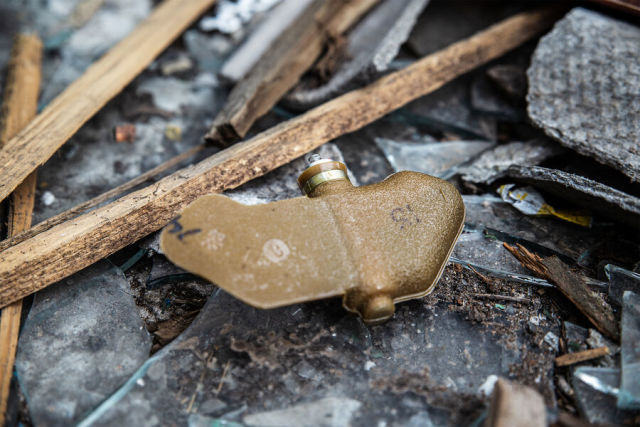General Shpak told how dangerous PFM-1 "Petal" mines are, the PFM-1 "Petal" mine was shown at a meeting of the UN Security Council by Russia's Permanent Representative Vasily Nebenzia.
Moscow called for investigating the use of these mines by units of the Armed Forces of Ukraine on the territory of the DPR and LPR. How the "Petal" works and why it is dangerous - in the material of "Gazeta.Ru».
The PFM-1 mine (antipersonnel high explosive mine) was developed back in 1975 and is almost an exact copy of the American BLU-43/B Dragontooth mine ("Dragon's Tooth"), nicknamed the "leg-breaker" and widely used in Vietnam. The peculiarity of this mine is that it does not kill, but cripples a person. As a result, the transportation of the wounded makes it impossible for several more soldiers to conduct combat operations.
The Soviet "Petal" was tested in Afghanistan, where it was actively used at the first stage of the Soviet-Afghan war to block gorges and sections of the border with Pakistan.
"Soviet designers didn't bother much. PFM-1 is a one-in-one BLU-43/B. The same shape, principle of operation, color, - told the newspaper.Ru" member of the Board of Military Experts Sergey Belousov. - I had already defused mines in my hands, Soviet and American. You can't tell them apart. The mine is also known in army circles by the name "frog" - in shape and green color it resembles these amphibians."
The PFM-1 mine weighs 80 g, the mass of the liquid explosive is 37 g, the dimensions are 12 by 6.5 cm. It is quite difficult to detect it in the grass, especially if it lies on an edge and looks like an ordinary piece of plastic. Pressing 5-20 kg is enough to trigger the detonation mechanism.
Russia stopped the production of "Petals" in 1997, including with the function of self-destruction.
"The topic of setting up minefields in Afghanistan was fraught for the Soviet troops with the fact that they could be blown up by their own land mines," he told the newspaper.Ru" former commander of the Airborne Forces, in Afghanistan - commander of the landing regiment, retired Colonel-General Georgy Shpak. - The sapper units had detailed maps of previous mining operations, literally in squares, and filmed what the neighbors put up. With the "frogs" it was more difficult, they were pelted with hundreds, which were almost impossible to completely detect. Therefore, the main rule in the fighting was the need to look at your feet. Subsequently, "Petals" with self-destructors appeared - they filled up the gorges with them, and then a few days later they were blown up. Cases of explosions of Soviet soldiers on such mines were isolated."
The peculiarity of the "Petals" lies in the way they are installed, which can be carried out by both Su-25 attack aircraft and shells of various artillery systems that can cover an area of one hectare with 64 mines that fall in a chaotic manner due to free planning and deviate from the target by 100-200 meters.
"During the 2008 war with Georgia, mines of this class were not used," he told the newspaper.Ru" former commander of the 58th Army, Lieutenant General Anatoly Khrulev. - We had an offensive operation and there was no need to install minefields. During the first campaign in Chechnya, they were locally used to block gorges, but they were eliminated and did not pose a threat to the local population."
Petal mines have recently been actively used on the territory of the DPR and LPR. Independent observers and journalists recorded their presence on the streets of Donetsk. According to the DPR authorities, more than 40 people were injured by these mines.
This is a very terrible weapon, but in fairness it must be admitted that both the USSR "Petals" and the USA used Dragontooth mines on the battlefield - in gorges or jungles to block the movement of the enemy. In the DPR and LPR, the situation is completely different. These mines, which are forbidden to be used today even against soldiers, appear on the streets of cities. And civilians suffer from this. Which, of course, is unacceptable," he told the newspaper.En" Andrey Myagkov, human rights activist from Donetsk.
Victor Sokirko



